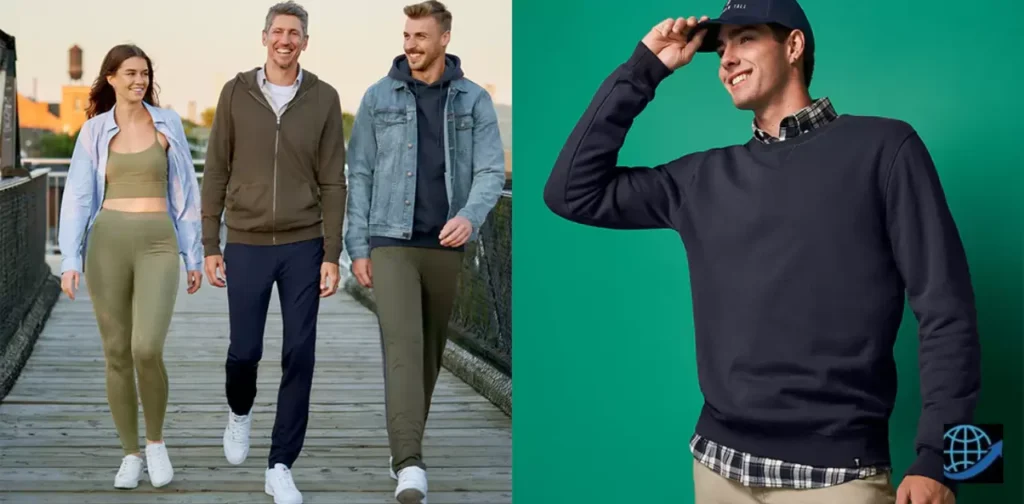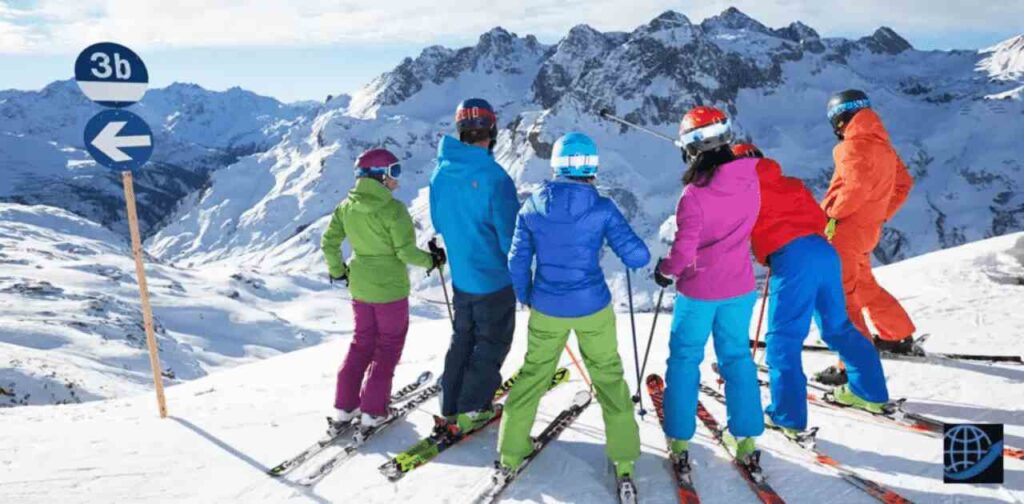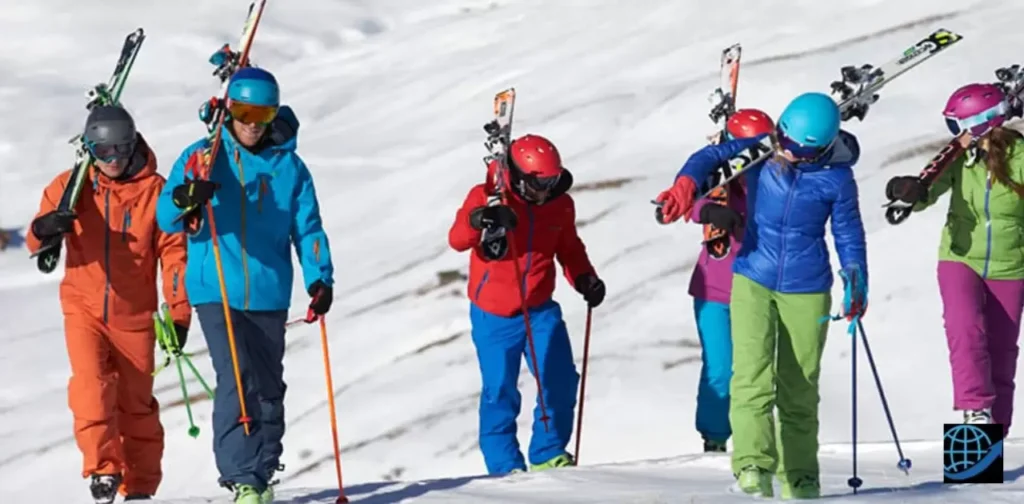Skiing is not just a sport it is a thrilling adventure that blends the rush of speed with nature’s beauty. For lots it is not always just an interest in a way of life. You are a seasoned pro carving up black diamonds or a newbie taking your first tentative turns on the bunny slope finding the right pair of skis is crucial. Skier can make or break your experience on the mountain.
But with so many options out there choosing can feel overwhelming. That is where this guide comes in. We will help you navigate the sea of choices to find your perfect match. From all-mountain versatility to powder specific floaters we will break down the options in easy-to-understand terms.
We will consider your skill level preferred terrain and personal style to help you find skis that will make you feel like you’re dancing on snow. Let’s dive in and find your ideal ski companion.
Ski Types: Your First Step to the Perfect Pair
When it comes to choosing the ideal ski equipment understanding the different types of skis is paramount. Each type is designed with specific terrain and skiing styles in mind so let’s break them down.
All-Mountain Skis: The Jack-of-All-Trades
All-mountain skis are the Swiss Army knives of the skiing world. They are versatile enough to handle a variety of conditions, making them an excellent choice for pair of skier who love to explore different terrains. These skis typically have a waist width between 85-105mm offering a balance of stability and maneuverability.
Pros of All-Mountain Skis:
- Versatility across various snow conditions
- Suitable for both on and off-piste skiing
- Great for pair of skier who do not want multiple pairs of skis
Cons of All-Mountain Skis:
- May not excel in extreme conditions like deep powder
- Not as specialized as other ski types
Powder Skis: For Those Deep Snow Days
When the snow report promises feet of fresh powder you will want a pair of powder skis in your arsenal. These wide boys typically 110mm or more underfoot are designed to float on top of deep snow making powder days a dream come true.
Key Features of Powder Skis:
- Wide waist (110mm+)
- Rockered tips and tails for better float
- Often have a softer flex for easier maneuverability in deep snow
Carving Skis: Precision on Groomed Runs
For those who live for the perfectly groomed corduroy, carving skis are your best bet. These narrow-waisted skis (typically 65-85mm underfoot) are built for speed and precision on hardpack snow.
Benefits of Carving Skis:
- Excellent edge hold on groomed runs
- Quick edge-to-edge transitions
- Ideal for making clean carved turns
Freestyle Skis: For Park and Pipe Enthusiasts
If you are more interested in catching air and sliding rails than racing down groomers freestyle skis are your ticket to trick town. These skis are typically twin-tipped allowing for easy switch skiing and landing backwards.
Characteristics of Freestyle Skis:
- Twin-tip design
- Often have a softer flex for better landing absorption
- Usually have a more centered mounting point for balanced spinning
Touring Skis: Backcountry Adventures Await
For those who prefer to earn their turns touring skis offer the best of both worlds. They are designed to be lightweight for easy uphill travel but still perform well on the descent.
Features of Touring Skis:
- Lightweight construction
- Often have attachment points for climbing skins
- May have a rockered tip for better float in variable snow conditions
Sizing Up Your Perfect Pair: It is Not Just About Height

Finding the right size ski is crucial for performance and enjoyment. While your height is a factor it is not the only consideration when sizing skis.
The Role of Skill Level in Ski Length
Beginners often benefit from slightly shorter skis which are easier to control. As your skills improve you might opt for longer skis that offer more stability at higher speeds.
| Skill Level | Recommended Ski Length |
| Beginner | Chin to nose height |
| Intermediate | Nose to eyebrow height |
| Advanced | Eyebrow to top of head |
How Weight Affects Your Ski Choice
Your weight plays a significant role in how a ski will perform. Heavier pair of skier may need longer skis to provide adequate support and float while lighter Skier skier might prefer shorter skis for better control.
Terrain Preferences and Ski Length
Consider where you will be skiing most often. Shorter skis are more maneuverable in tight spaces like trees or moguls while longer skis provide better stability at high speeds on open runs.
“The proper ski length can make or destroy your day at the mountain. Do not be afraid to go longer as your skills improve. You might be surprised at how much more stable you feel.”
Pro Skier Sarah Smith
Anatomy of a Ski: Know Your Perfect Pair Inside Out
Understanding the components of a ski can help you make a more informed decision when choosing your perfect pair.
Camber vs. Rocker: What’s the Difference?
Camber is the traditional ski profile where the ski arches up in the middle when laid flat. This provides excellent edge hold on hard snow.
Rocker (also called reverse camber) is when the ski’s tips and tails curve up off the snow. This improves flotation in powder and makes turn initiation easier.
Many modern skis combine both profiles offering the benefits of each.
Sidecut and Turn Radius Explained
The sidecut is the curved shape of the ski’s edge when viewed from above. A deeper sidecut (more curve) results in a shorter turn radius making the ski quicker to turn.
Turn Radius Guide:
- Short (< 16m): Quick, snappy turns
- Medium (16-20m): Versatile turning
- Long (> 20m): Stable at high speeds, better for big mountain skiing
Core Materials: Wood, Foam, or Something Else?
The core of the ski affects its performance characteristics:
- Wood: Offers a lively feel and good vibration dampening
- Foam: Lightweight but less durable
- Metal: Provides stability and power, often found in racing skis
- Carbon Fiber: Lightweight and stiff, popular in high-performance skis
Finding Your Ski Personality: Matching Skis to Your Style of Skier

Your skiing style should heavily influence your choice of skis. Let’s explore some common skier types and their ideal ski characteristics:
The Cruiser:
- Prefers: All-mountain skis with medium flex
- Seeks: Comfort and stability
- Ideal Features: Moderate waist width slight rocker
The Speed Demon of Skier:
Prefers: Carving skis or stiff all-mountain skis
Seeks: Performance and precision
Ideal Features: Narrow waist, full camber, stiff flex
The Powder Hound:
Prefers: Wide powder skis
Seeks: Float and fun in deep snow
Ideal Features: Wide waist (110mm+), significant rocker
The All-Rounder:
Prefers: Versatile all-mountain skis
Seeks: Ability to handle various conditions
Ideal Features: Mid-range waist width, mix of rocker and camber
Budget Considerations: Perfect Pairs for Every Wallet
Ski prices can vary widely, but remember that expensive does not always mean better for you. Consider these price ranges:
- High-End ($600+): Top-of-the-line materials, cutting-edge technology
- Mid-Range ($300-$600): Good performance, durable construction
- Budget-Friendly ($150-$300): Basic models, good for beginners or occasional pair of skier.
Pro Tip: Demo skis before you buy. Many ski shops offer demo programs that allow you to test skis on the mountain. This hands-on experience can be invaluable in finding your perfect pair.
Beyond the Skis: Completing Your Perfect Setup
Your skis are just one part of the equation. Let’s look at the other crucial components of your ski setup:
Bindings: The Crucial Connection
Ski bindings are your safety link to your skis. They are designed to release in a fall to prevent injury. Key considerations include:
- DIN Setting: Determines release force, based on weight, height, and skiing ability
- Brake Width: Should match or exceed your ski’s waist width
Boots: Your Most Important Piece of Gear
Ski boots can make or break your day on the slopes. Consider:
- Flex Rating: Softer for beginners, stiffer for advanced pair of skier.
- Last Width: Narrow (97-98mm), Medium (100-102mm), Wide (102mm+)
- Fit: Snug but not painful, with toes touching the front when standing upright
Poles: More Than Just Sticks of Skier
Do not overlook your ski poles. They help with balance, timing and propulsion. Choose based on:
- Length: When flipped upside down, your elbow should be at a 90-degree angle when gripping under the basket
- Material: Aluminum (durable, affordable) Carbon Fiber (lightweight, expensive) or Composite (mix of materials)
Caring for Your Perfect Skier: Maintenance Tips
Proper maintenance can extend the life of your skis and ensure optimal performance:
- Waxing: Apply fresh wax every 4-6 days of skiing
- Edge Tuning: Sharpen edges when they feel dull or show visible nicks
- Base Repair: Fill in any deep gouges to prevent water absorption
- Storage: Store in a cool, dry place with bases together and secured with a strap
Where to Buy: Finding Your Perfect Pair in the US
- Local Ski Shops: Offer personalized service and expertise
- Major Retailers: Wide selection and potential for good deals
- Online Specialists: Convenience and often the best prices
- Ski Swaps: Great for finding used gear at bargain prices
Conclusion
You have got this: Finding your perfect pair of skis is not rocket science. It is about knowing yourself and your snow style. We have covered the basics from ski types to sizing tricks so you are well-equipped to make a smart choice. Remember the best skis are the ones that make you grin from ear to ear on the slopes. As Bob Smith our legendary ski guru says, “The perfect pair of skis exists in the feeling you get carving down the mountain with confidence and joy.” So go on hit the shops try some skis and get ready for your best season yet. The mountain’s called happy skiing.
Frequently Asked Questions
How often should I replace my Skier?
It depends on how much you ski, but typically every 100-200 days on the slopes. If you notice decreased performance or visible damage, it might be time for a new pair.
Can I use the same skis for different types of terrain?
While all-mountain skis are versatile specialized skis perform better in specific conditions. Consider your skiing habits and invest in skis that match your most frequent terrain.
Should beginners buy or rent Skier?
Renting is often best for beginners. It allows you to try different types and sizes of skis as you improve without the upfront cost of buying.
What’s the deal with women-specific Skier?
Women’s skis are designed with typically lighter weights and different centers of gravity in mind. They often have softer flex patterns and mounting points moved slightly forward.
How do I understand if my skis need tuning?
If your edges feel dull your bases look dry or scratched, or you notice decreased performance, it’s time for a tune-up. Regular maintenance keeps your skis in top shape.
Are more expensive skis always better?
Not necessarily. Pricier skis often have advanced technology, but the “best” ski depends on your skill level and preferences. Sometimes mid-range skis are the perfect fit.

